In the realm of animal intelligence, certain species continually astonish researchers with cognitive abilities that challenge our understanding of non-human minds. Among these remarkable creatures, the African Grey parrot stands out for its exceptional problem-solving capabilities. Recent studies have revealed that these feathered geniuses can navigate complex puzzles more efficiently than many human children, solving problems that leave five-year-olds scratching their heads. This discovery not only reshapes our understanding of avian cognition but also raises profound questions about the evolution of intelligence across different evolutionary paths. As we delve into the fascinating world of parrot problem-solving, prepare to have your assumptions about animal intelligence thoroughly challenged.
The Remarkable African Grey Parrot
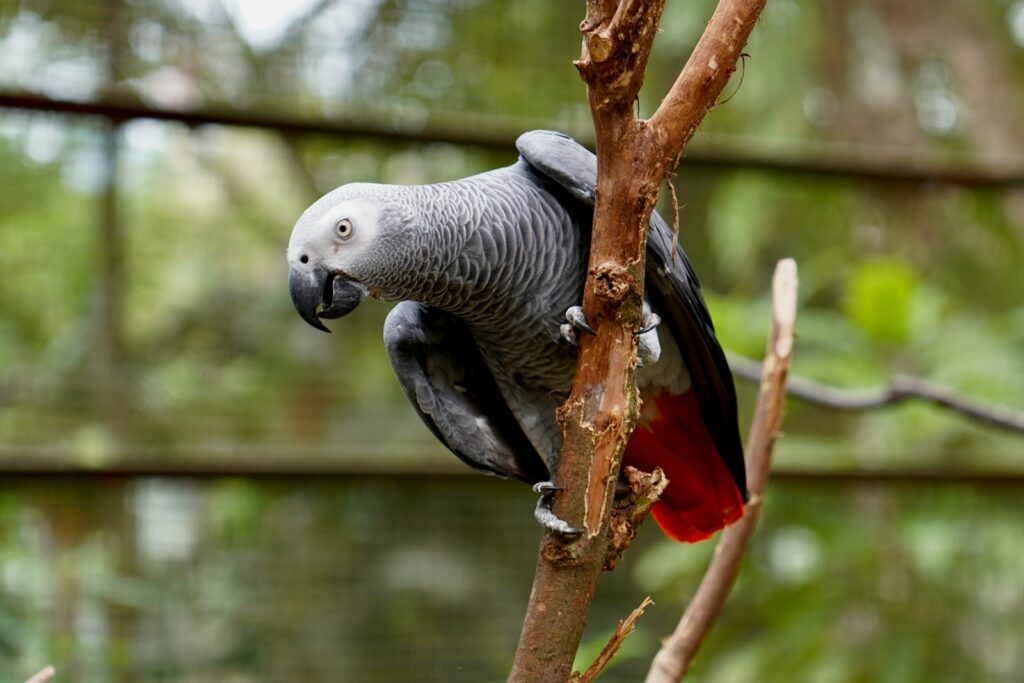
African Grey parrots (Psittacus erithacus) have earned their reputation as the intellectual giants of the avian world. Native to the rainforests of West and Central Africa, these medium-sized birds possess brain-to-body ratios comparable to those of great apes and dolphins, despite their relatively small size. Their distinctive appearance—characterized by ash-grey plumage and striking red tail feathers—belies the complex neural architecture operating behind their keen eyes. Scientists have documented their extraordinary capacity for abstract reasoning, numerical competence, and even understanding of cause-and-effect relationships. What makes these birds particularly remarkable is that their impressive cognitive abilities have evolved independently from those of mammals, representing a fascinating case of convergent evolution in intelligence.
The Groundbreaking Research
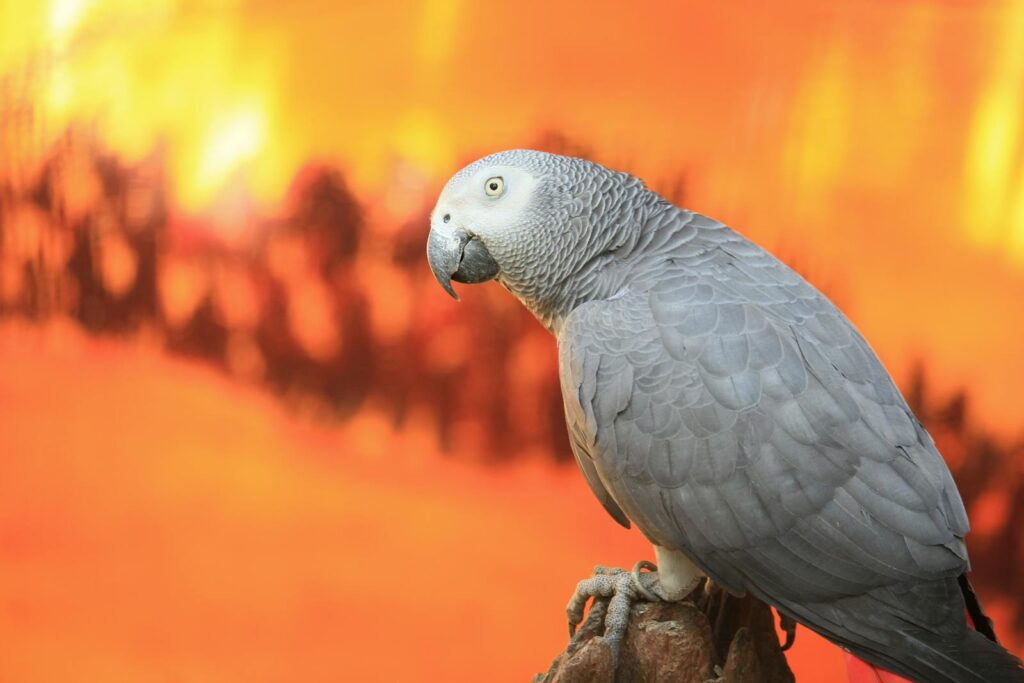
The comparison between parrot and child problem-solving abilities emerged from pioneering research conducted at Harvard University and several European research institutions. In these studies, researchers designed a series of increasingly complex mechanical puzzles that required subjects to understand physical causality, sequential reasoning, and tool manipulation. The experiments involved 22 African Grey parrots and a control group of 102 children aged three to five years. The results stunned the scientific community: on several tasks requiring innovative problem-solving approaches, the parrots consistently outperformed children under five years old, completing puzzles an average of 35% faster. Particularly noteworthy was the parrots’ ability to abandon unsuccessful strategies quickly, while children often persisted with non-working approaches—suggesting that the birds possessed superior cognitive flexibility in certain contexts.
Puzzles That Challenge Young Minds
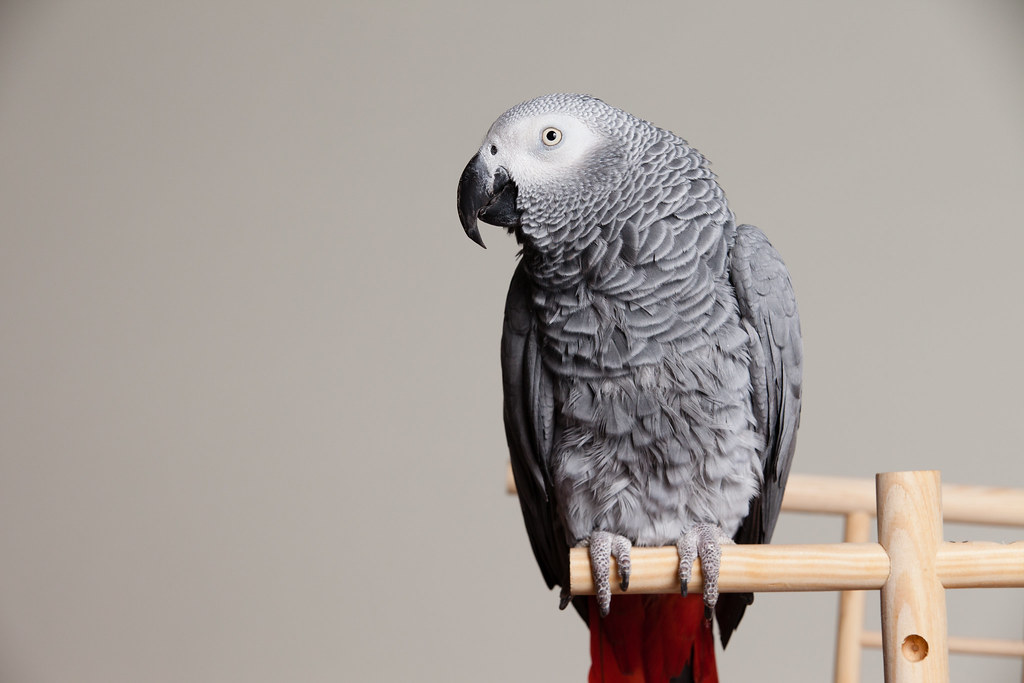
The puzzles employed in these comparative studies were carefully designed to test multiple cognitive dimensions simultaneously. One particularly revealing test was the “transparent cylinder task,” where subjects needed to retrieve a reward visible through a clear tube but accessible only from the ends. While human children repeatedly attempted to reach directly through the transparent barrier, the parrots quickly recognized the physical constraints and moved to approach from the open ends. Another challenging puzzle involved a multi-step locking mechanism where several actions had to be performed in a specific sequence to release a food reward. The African Greys demonstrated remarkable efficiency in learning the correct sequence, often mastering it within three to four attempts—significantly outpacing their human counterparts, who frequently required 15-20 tries to achieve consistent success.
Alex: The Einstein of Parrots
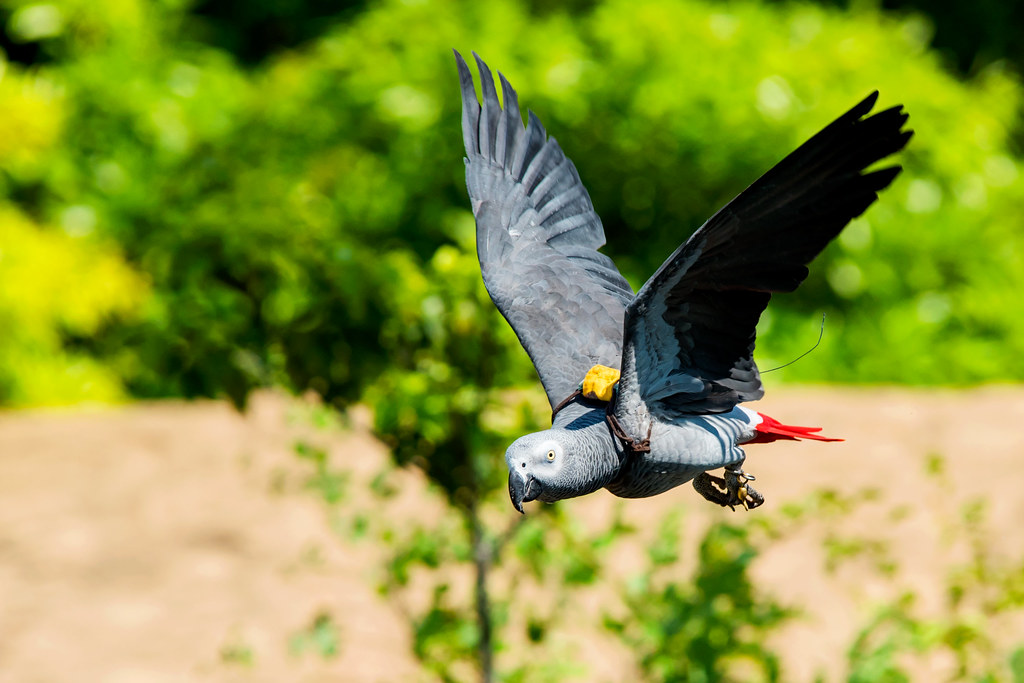
No discussion of parrot intelligence would be complete without mentioning Alex, the African Grey who revolutionized our understanding of avian cognition. Under the guidance of Dr. Irene Pepperberg at Harvard University, Alex demonstrated abilities previously thought impossible for non-primates. He mastered a vocabulary of over 100 English words, could identify objects by color, shape, and material, and even understood the concept of “zero”—an abstract notion that human children typically don’t grasp until age four. Alex’s problem-solving abilities extended to devising novel solutions for obtaining rewards, sometimes creating multi-step approaches that researchers hadn’t anticipated. His legacy continues to influence research in comparative cognition, with many of the puzzle-solving studies building directly upon the foundation he helped establish.
The Neural Basis of Parrot Intelligence
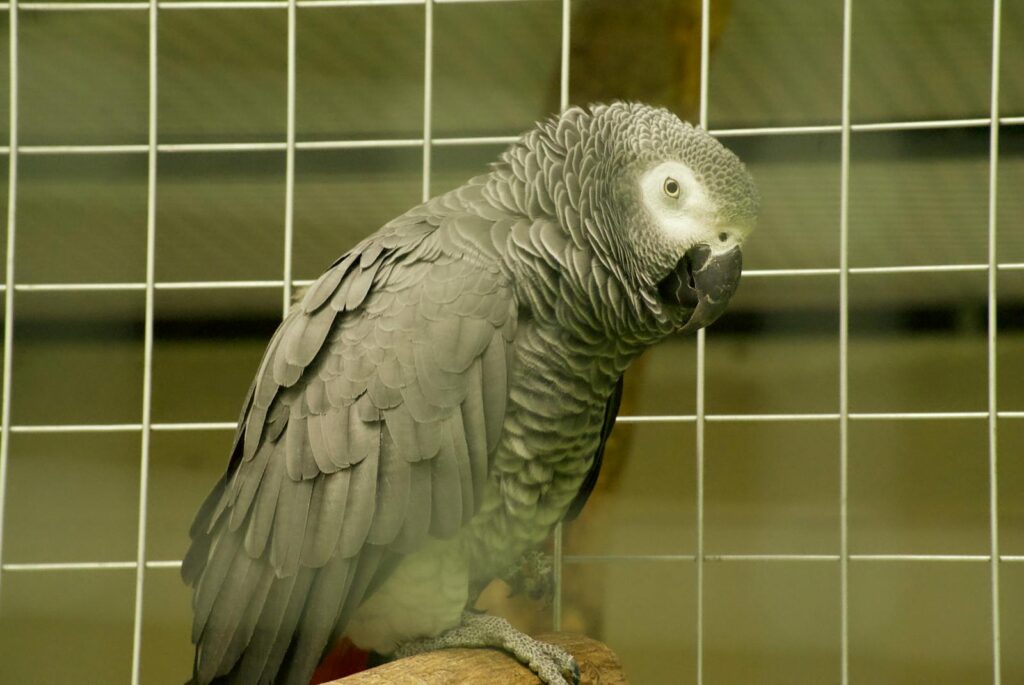
Recent advances in neuroscience have begun to unravel the biological underpinnings of the African Grey’s remarkable cognitive abilities. Despite having brains the size of walnuts, these parrots possess neural densities that rival those found in primates. The avian pallium—comparable to the mammalian cortex—contains specialized circuits that support advanced cognitive functions despite a radically different brain organization from mammals. Neuroimaging studies have revealed that when African Greys tackle complex puzzles, they activate brain regions associated with planning and sequential processing in ways strikingly similar to humans. This represents a remarkable case of convergent evolution, where different evolutionary lineages have independently developed similar neural solutions to support higher cognition, despite being separated by over 300 million years of evolution.
Problem-Solving Strategies: Birds vs. Children

The contrasting approaches to problem-solving between parrots and children reveal fascinating insights into different types of intelligence. African Greys tend to employ what researchers call “efficient trial-and-error learning,” making rapid adjustments based on immediate feedback from their environment. They rarely repeat unsuccessful approaches, exhibiting a pragmatic efficiency that maximizes reward opportunities. Children, conversely, often demonstrate “theory-based problem solving,” forming conceptual models about how they think things should work, sometimes persisting with these models even when they prove ineffective. While the children’s approach fosters deeper conceptual understanding over time, the parrots’ method yields faster solutions in the short term. This distinction highlights how different selective pressures have shaped cognitive strategies across species, with parrots evolving under conditions where rapid adaptation to environmental challenges provided survival advantages.
The Role of Physical Dexterity
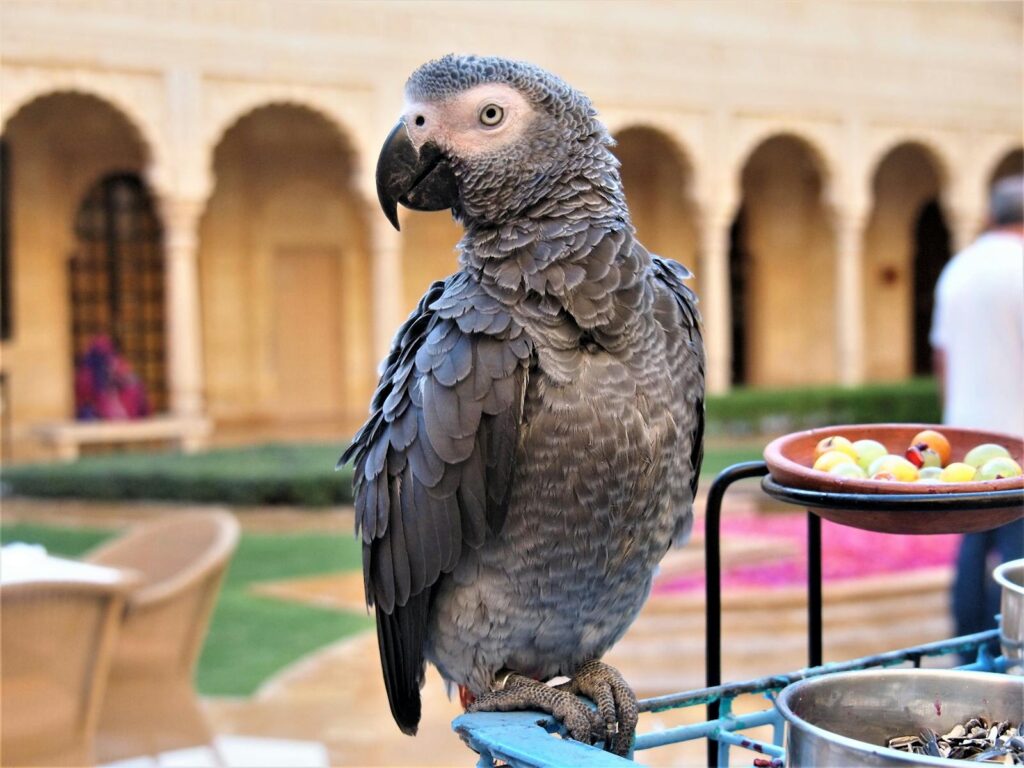
An often overlooked factor in parrot problem-solving success is their remarkable physical dexterity. African Greys possess zygodactyl feet—with two toes pointing forward and two backward—providing them exceptional grasping abilities that function almost like hands. Combined with their powerful, precisely controlled beaks, parrots essentially have two manipulative appendages that can work in coordination. This physical advantage allows them to interact with puzzles in ways that young children, still developing fine motor control, cannot match. In several studies, researchers observed parrots using their beaks to hold certain puzzle elements stable while simultaneously using their feet to manipulate other components—a level of coordination that most five-year-olds haven’t yet mastered. This physical capability, coupled with their cognitive abilities, creates a powerful problem-solving toolkit that gives parrots a distinct advantage in mechanical challenges.
Social Learning and Observation
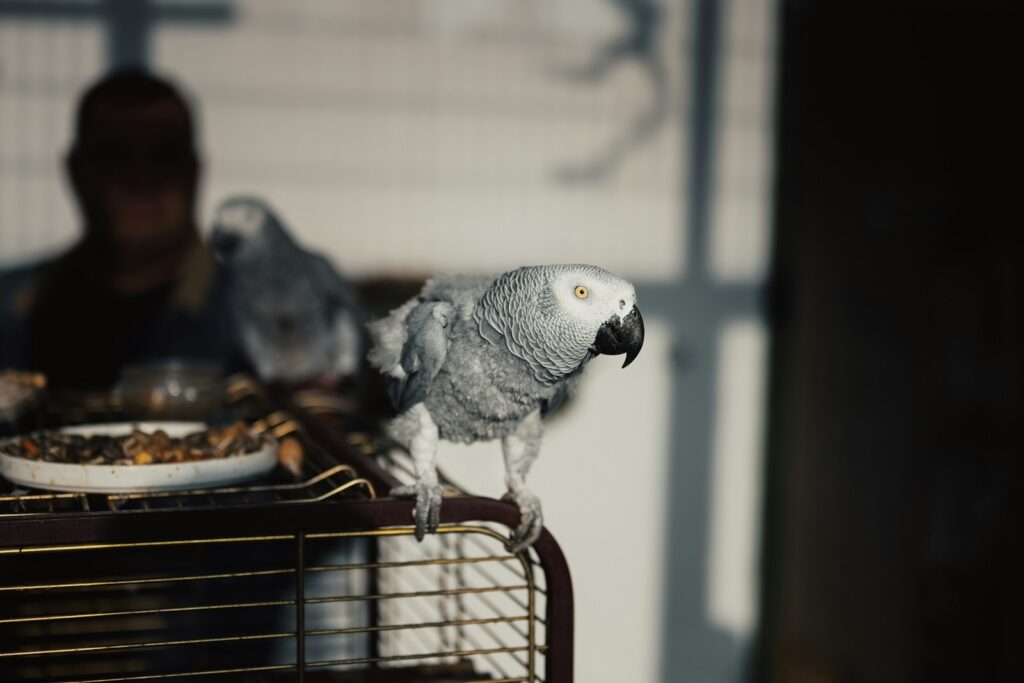
African Greys demonstrate exceptional observational learning capabilities that contribute significantly to their puzzle-solving prowess. In the wild, these highly social birds learn survival skills by watching flock members, and this translational learning transfers remarkably well to experimental settings. When exposed to demonstrations of puzzle solutions, parrots often require only one or two observations before successfully replicating the necessary steps. Children, while also capable of observational learning, typically need multiple demonstrations and explicit instruction to achieve the same results. This difference may stem from the parrots’ evolutionary history, where rapid social learning provided immediate survival advantages in dynamic forest environments. Researchers have documented cases where African Greys not only learned puzzle solutions through observation but subsequently improved upon the demonstrated methods, showcasing their ability to innovate beyond simple mimicry.
The Significance for Evolutionary Biology
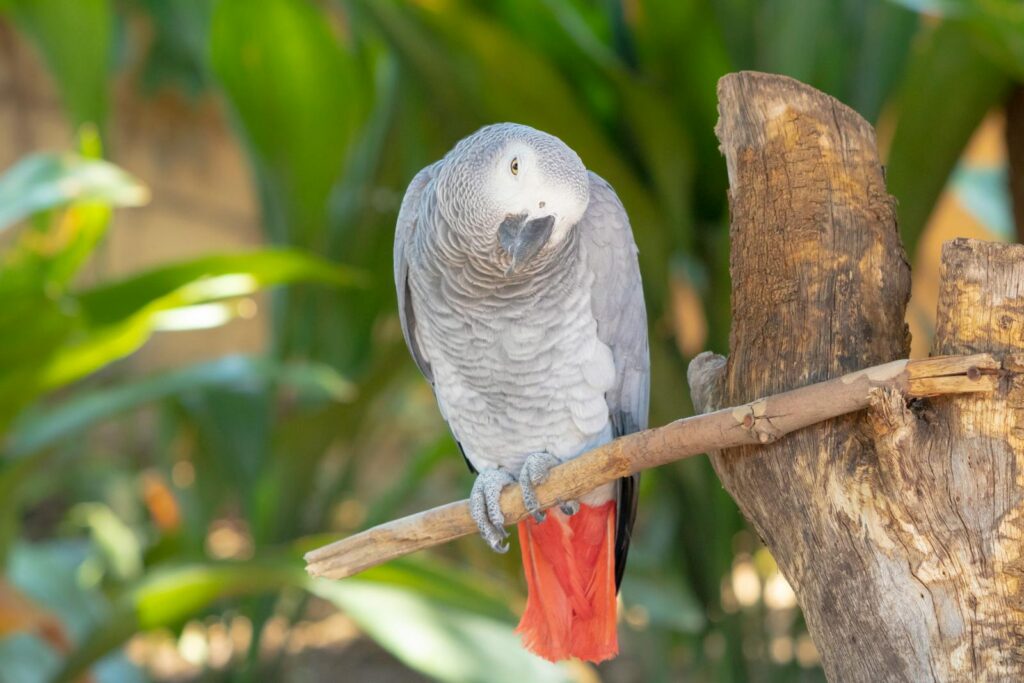
The discovery that parrots can outperform young children on certain cognitive tasks has profound implications for our understanding of evolutionary biology and intelligence. It challenges the long-held assumption that primate-like intelligence represents the pinnacle of cognitive evolution, demonstrating instead that remarkable mental capabilities can evolve independently along different evolutionary branches. The avian lineage diverged from the line leading to mammals approximately 300 million years ago, meaning that the impressive problem-solving abilities of parrots evolved entirely separately from our own. This represents a striking example of convergent evolution—where similar traits develop independently in different lineages—suggesting that certain aspects of advanced cognition may emerge naturally when selection pressures favor complex problem-solving abilities. The parrot brain thus offers a fascinating “alternative experiment” in the evolution of intelligence, one that achieved sophisticated cognition through entirely different neural arrangements.
Implications for Artificial Intelligence
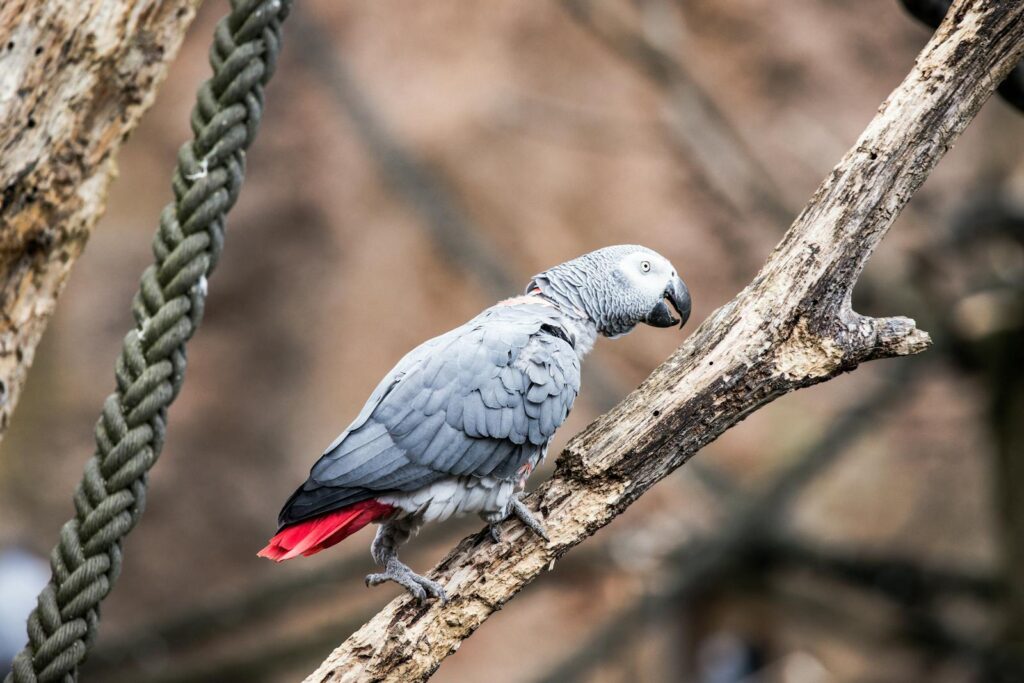
The distinctive problem-solving approaches demonstrated by African Greys have attracted attention from artificial intelligence researchers seeking to develop more efficient computational models. The parrots’ rapid adaptation to novel problems, efficient abandonment of unsuccessful strategies, and exceptional pattern recognition capabilities represent valuable templates for machine learning algorithms. Several AI research teams have begun modeling neural networks based on the parrot’s cognitive architecture, creating systems that combine rapid trial-and-error approaches with sophisticated pattern recognition. These “parrot-inspired algorithms” have shown particular promise in robotic applications requiring adaptive responses to changing environmental conditions. The efficiency with which African Greys solve physical puzzles provides a compelling biological model for developing AI systems that can navigate real-world physical challenges with minimal computational resources—a capability that traditional deep learning approaches often struggle to achieve.
Caring for a Cognitive Powerhouse
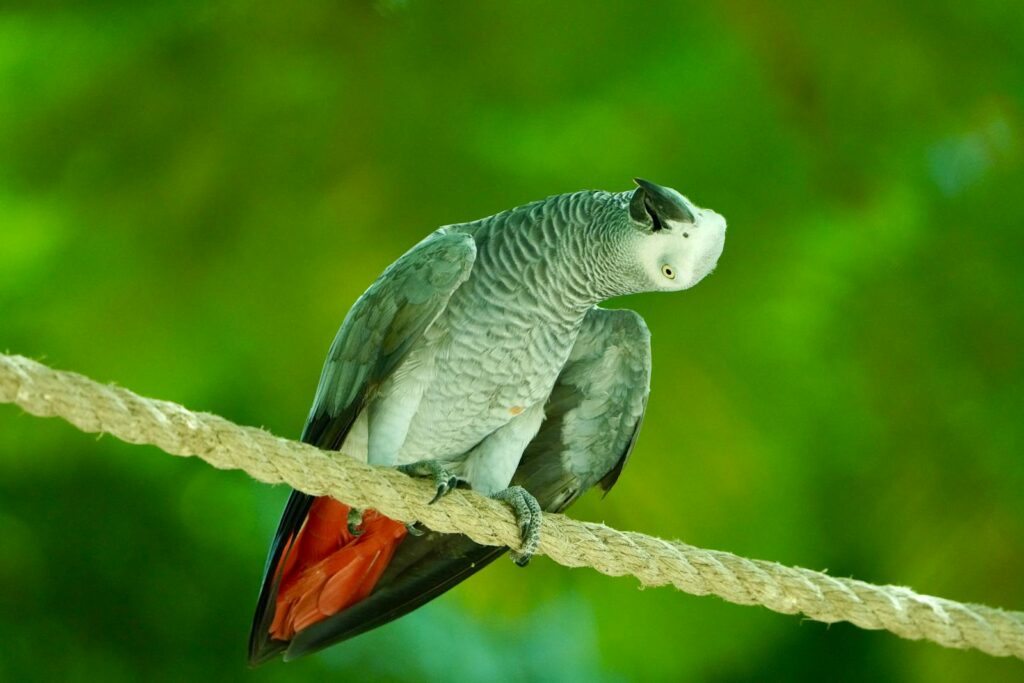
The exceptional intelligence of African Grey parrots creates special considerations for those who keep them as companions. These cognitive powerhouses require extensive mental stimulation to prevent boredom and the development of problematic behaviors. Owners must provide a regular rotation of puzzles and problems that challenge their birds’ remarkable minds, with complexity increasing as the parrot masters simpler challenges. Social engagement represents another critical component, as these highly social creatures suffer significant psychological distress when deprived of adequate interaction. The significant time commitment required—often 3-4 hours of direct engagement daily—means African Greys are unsuitable pets for many households. Their lengthy lifespans, frequently exceeding 50 years in captivity, further underscore the substantial commitment involved in responsibly caring for these intelligent birds.
Conservation Challenges
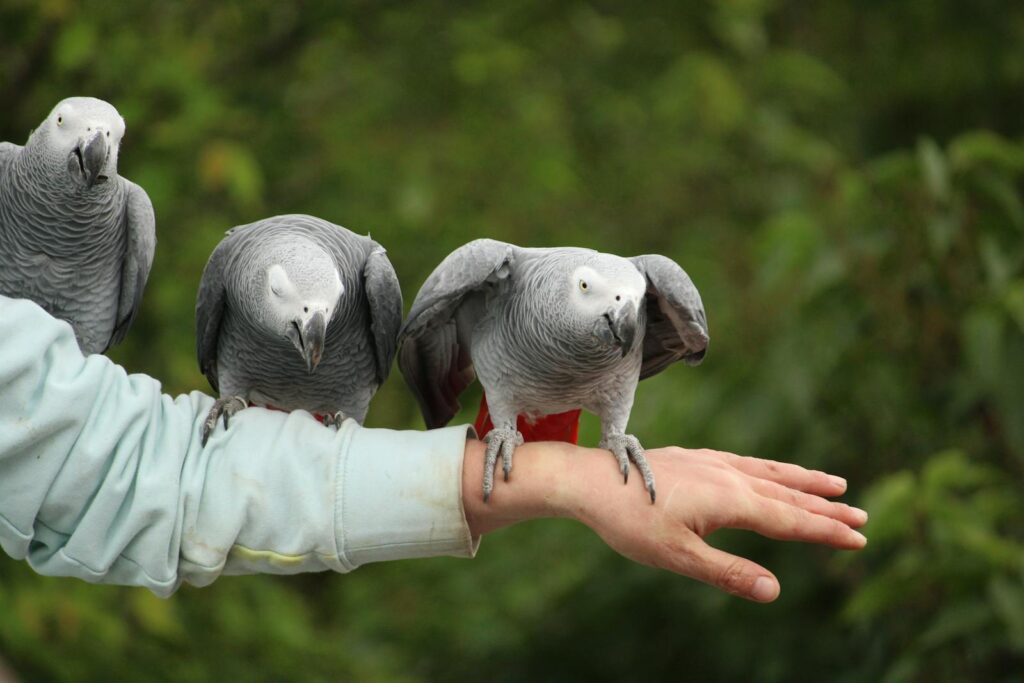
The very intelligence that makes African Greys such fascinating subjects for cognitive research also contributes to their vulnerability in the wild. Their exceptional learning abilities and vocal mimicry make them highly prized in the pet trade, driving extensive poaching that has devastated wild populations. The International Union for Conservation of Nature (IUCN) now classifies African Greys as Endangered, with population declines exceeding 50% across much of their range. Habitat destruction compounds these pressures, with Central African rainforests facing unprecedented levels of deforestation. Conservation efforts focus on strengthening enforcement against illegal wildlife trafficking and establishing sustainable captive breeding programs to reduce pressure on wild populations. The potential loss of these cognitive marvels would represent not only an ecological tragedy but also the disappearance of a unique evolutionary experiment in animal intelligence—one that continues to yield valuable insights into the nature of cognition itself.
Future Directions in Research
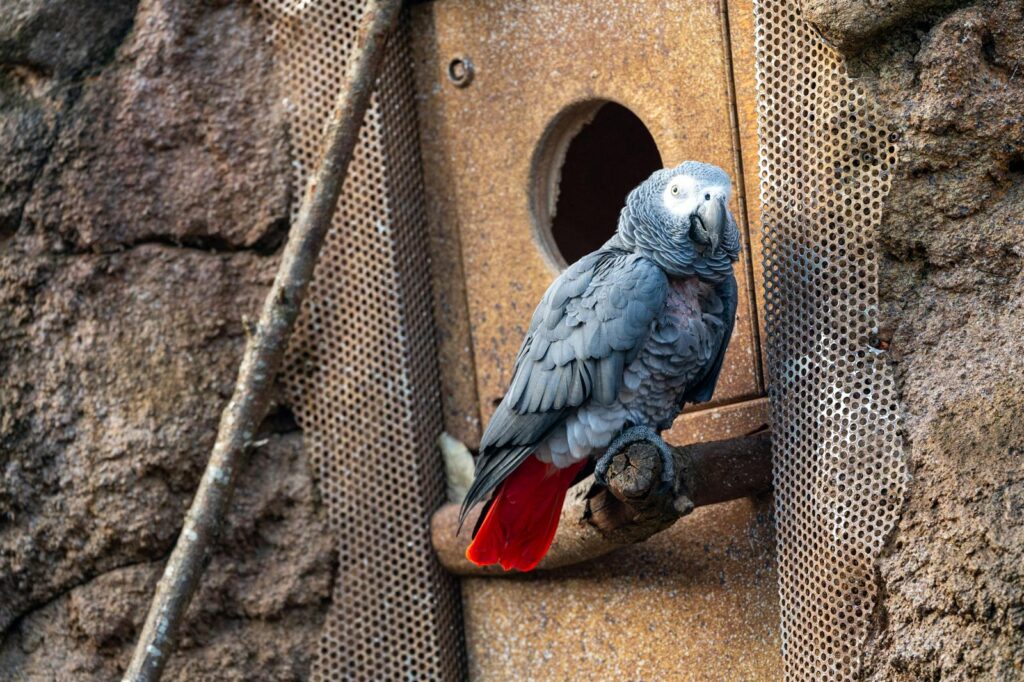
The discovery that parrots can outpace young children in solving certain puzzles has opened exciting new avenues for research in comparative cognition. Scientists are now developing more sophisticated comparative studies to isolate specific cognitive mechanisms that might explain the parrots’ advantages. One promising approach involves longitudinal studies tracking the development of problem-solving abilities in young parrots alongside children, potentially revealing how these capabilities emerge and mature in both species. Neuroscientists are utilizing advanced imaging techniques to map neural activity during problem-solving tasks, seeking to identify the specific brain circuits that enable the birds’ exceptional performance. Perhaps most intriguingly, some researchers are exploring whether insights from parrot cognition might inform educational approaches for children, potentially helping young humans develop the cognitive flexibility and efficient problem-solving strategies that come so naturally to their feathered counterparts.
Conclusion
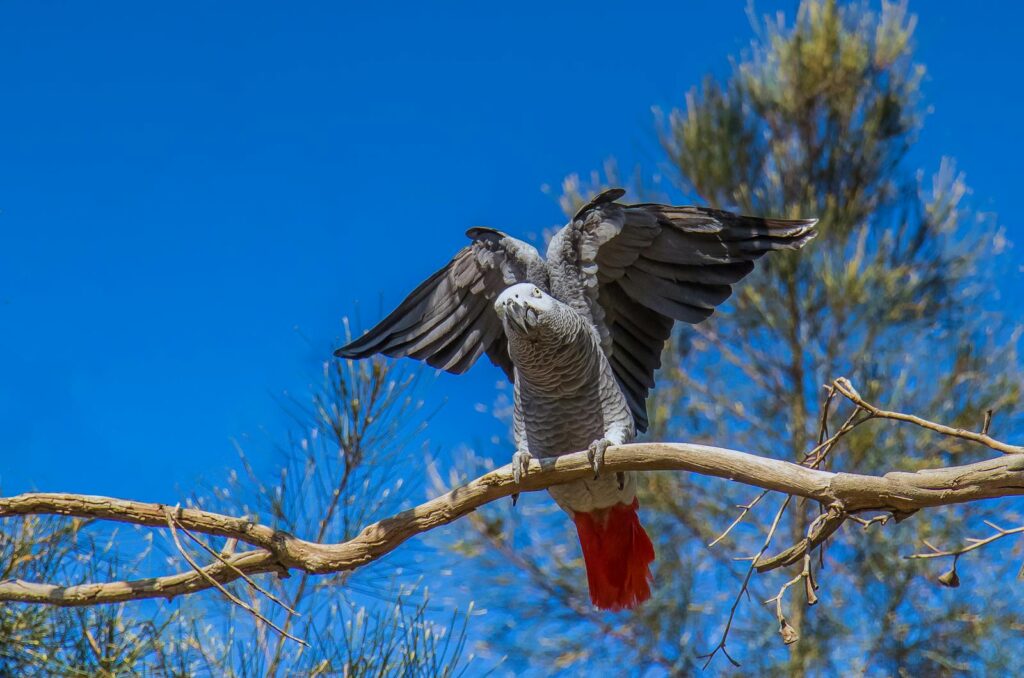
The remarkable puzzle-solving abilities of African Grey parrots not only challenge our assumptions about animal intelligence but also provide fascinating insights into the diverse evolutionary paths that can lead to advanced cognition. By outperforming young children on certain tasks, these extraordinary birds demonstrate that sophisticated problem-solving isn’t exclusively a primate domain. As research continues to illuminate the mechanisms behind their impressive mental capabilities, we gain valuable perspective on our own cognitive development and the fundamental nature of intelligence itself. Perhaps most importantly, these findings remind us that remarkable minds can evolve in unexpected places—even in creatures whose ancestors diverged from our own hundreds of millions of years ago. The African Grey parrot stands as living proof that intelligence, in all its fascinating complexity, represents one of evolution’s most remarkable and convergent achievements.
